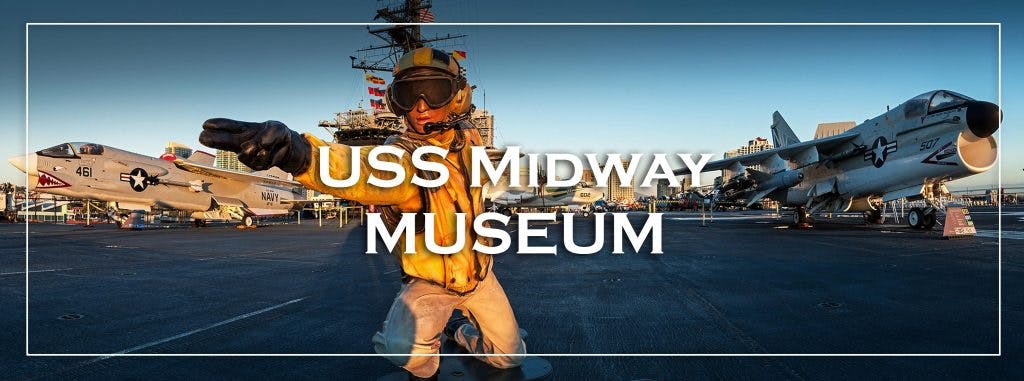 April 08, 2019 | Karl’s Korner
April 08, 2019 | Karl’s KornerAdmiral Lawrence Chambers: The Pathfinder
Hello again - Karl Zingheim, Midway’s ship historian, here! “Karl’s Korner” is a place for me to share with you – our social media followers, our visitors, and our Midway family – slices of history from my screen to yours! Again, I welcome and encourage anyone who reads this monthly historic segment to comment below, like, and share with your communities. This month, I was asked to highlight the career and accomplishments of an influential man in USS Midway and US Navy history; Admiral Lawrence Chambers. It is my pleasure to invite you all to look back with me...
The Pathfinder
A light rain was falling on the flight deck as the Midway turned into the wind for a small foreign aircraft. It was the final day of April, 1975, and South Vietnam had just fallen. Two days of constant helicopter evacuations had already shuttled thousands of frantic Vietnamese refugees out of Saigon to American ships offshore, but now the Midway was making room for a tiny Cessna, overloaded with a family of five, to attempt a desperate carrier landing. It was unorthodox to permit a foreign pilot with no carrier training to land aboard, but the alternative was a violent ditching in the sea and certain death for the children crammed inside the fragile plane. Captain Lawrence Chambers made this unprecedented call, but then, he was no stranger to breaking orthodoxy.
Born in Virginia in 1929, Chambers attended Dunbar High School in Washington, DC, graduating as class valedictorian. He was persuaded by fellow Dunbar alumnus Wesley Brown, who would be the first African-American to graduate from the Naval Academy, to join him at Annapolis. Chambers became a midshipman and endured four grueling years to graduate in 1952 as an ensign. But helping break the color barrier at Annapolis was not without cost, and Chambers could not bring himself to visit the Academy for another twenty years. It was in naval aviation, however, that he found his calling and became a carrier pilot in 1954. Flying the large, underpowered Grumman AF Guardian with VS-37, he then flew the powerful AD Skyraider with VA-215. After post-graduate education, Chambers transitioned to jets flying the A-4 Skyhawk with VA-125 and then VA-22, where he deployed aboard the Midway. In 1968, he established VA-67 (later VA-15) as its Commanding Officer with the new A-7 Corsair II attack jet. In 1973, Captain Chambers assumed command of the supply ship White Plains, in Yokosuka, Japan. After a successful sea command, Chambers became the Midway’s captain, and the first African-American to command an aircraft carrier, in March 1975. Just five days into his tour, Chambers was called into emergency preparations for the evacuation of South Vietnam. On April 30th, the plan was already in full swing when a scrawled note dropped from a small plane passing overhead. Written on a torn piece of map, the note asked for a clear runway to land. After a swift consultation with Midway Air Boss Vern Jumper, and the task force admiral, Chambers gave the order to clear the deck and allow Vietnamese Major Buong Le to come aboard. The Midway turned into the rainy wind, and the little Cessna Birddog fluttered down, bounced, and rolled to a stop to the thunderous applause of the Midway’s crew. Chambers personally congratulated Major Buong, and, years later, recalled him as the bravest man he had ever met.
The Midway’s work was still not over, however. As Saigon fell, the Midway was ordered to Thailand to crane aboard other South Vietnamese aircraft before they could be turned over to the communists. While transiting the Gulf of Siam, the Midway’s crew spotted a distressed fishing boat overloaded with 84 Vietnamese refugees. Despite a pressing operational directive to get to Guam, Chambers stopped the Midway and rescued all aboard the sinking vessel.
Advanced to rear admiral in August 1977, Chambers became the first African-American Naval Academy graduate to attain flag rank. He commanded Carrier Group Three during the Iran Hostage Crisis before concluding his career stateside. Just a few years later, his younger brother Andrew retired as a three star general in command of Patton’s Third Army in Georgia. Chambers was a pioneer at the Academy; he was in the forefront of technological change in a demanding service; he defied expediency to save imperiled lives. Throughout his life, whatever the challenge, Chambers always persevered, justifying his nation’s trust, and showing the way for other young Americans to follow. He is a pathfinder.
Eight bells, launch ‘em... until next time - Karl
Your Adventure Starts Now
Your email is the key to information that will open up all your possibilities for exploring the mighty Midway!

